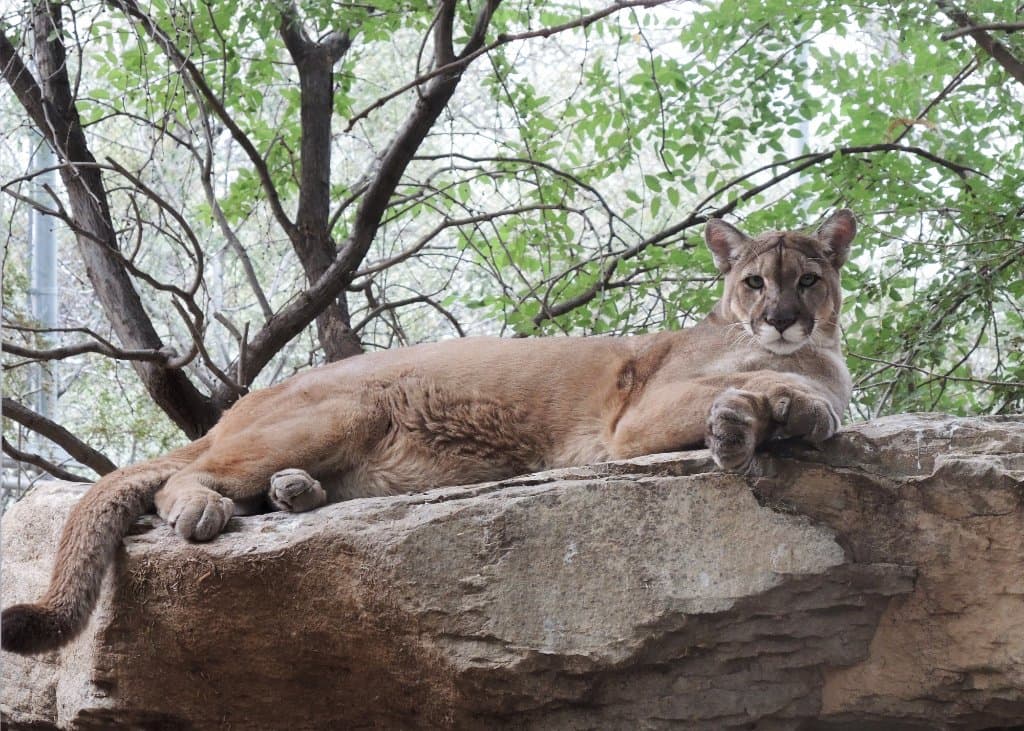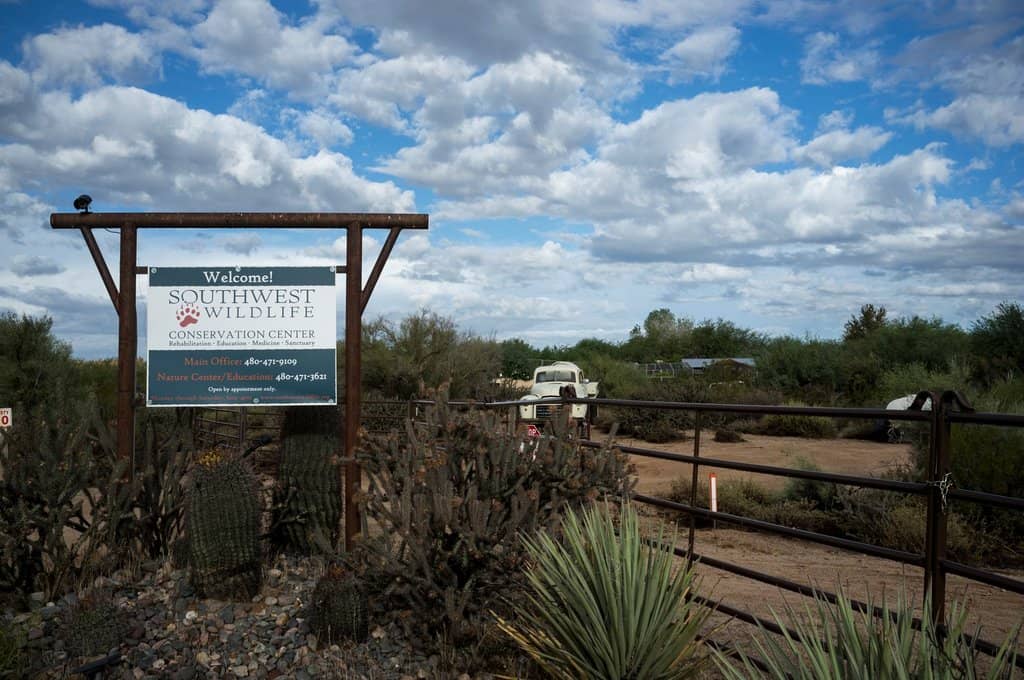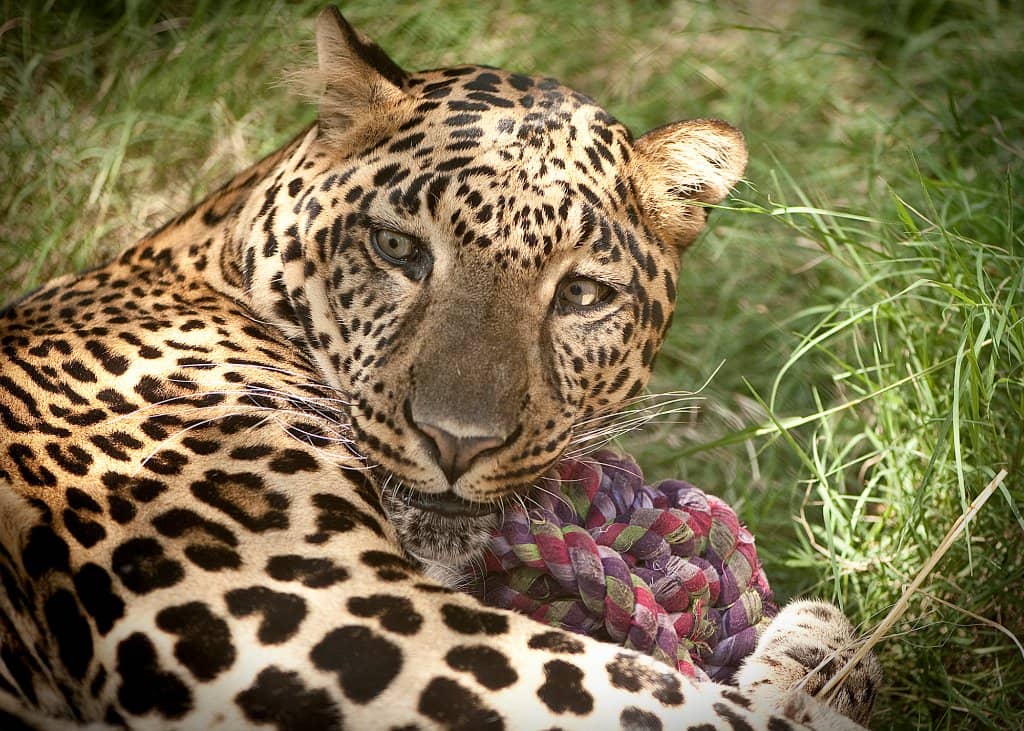
Southwest Wildlife Conservation Center
A sanctuary dedicated to rescuing, rehabilitating, and releasing native Arizona wildlife, offering educational tours and a glimpse into conservation e...

Highlights
Must-see attractions

Social
From TikTok & Reddit
Best Time
Animals are more active

Southwest Wildlife Conservation Center
Best Time
Animals are more active

Highlights
Must-see attractions
A sanctuary dedicated to rescuing, rehabilitating, and releasing native Arizona wildlife, offering educational tours and a glimpse into conservation efforts.
"This was such a wonderful experience - the extent to which the staff here love and care for these animals is so evident!"

🎯 Book Tours in Advance
Ensure your spot for an educational and impactful experience supporting wildlife rescue efforts .
☀️ Sun Protection is Key
Bring water, sunscreen, and wear closed-toe shoes for comfort in the Arizona heat .

Highlights
Discover the most iconic attractions and experiences

Meet Sanctuary Residents
Various enclosures
See rescued animals like mountain lions, bobcats, bears, and coatis who can't be released back into the wild.

Learn About Wildlife Rehabilitation
Throughout the center
Discover the vital work of rescuing, rehabilitating, and releasing injured or orphaned native Arizona wildlife.

Hear the Wild Calls
Animal enclosures
Experience the captivating sounds of coyotes singing and wolves howling, a truly unique auditory experience.
Plans like a pro.
Thinks like you
Planning Your Visit
Book Your Tour in Advance
Prepare for the Arizona Sun
Best Times
Insider Tips
from TikTok, Instagram & Reddit
🎯 Book Tours in Advance
Ensure your spot for an educational and impactful experience supporting wildlife rescue efforts.
☀️ Sun Protection is Key
Bring water, sunscreen, and wear closed-toe shoes for comfort in the Arizona heat.
👂 Listen to the Guides
Staff are knowledgeable and share fascinating stories about each animal's journey.
🦊 Fox Enthusiast's Dream
If you love foxes, this is a great place to learn about them and their conservation needs.
Tips
from all over the internet
🎯 Book Tours in Advance
Ensure your spot for an educational and impactful experience supporting wildlife rescue efforts.
☀️ Sun Protection is Key
Bring water, sunscreen, and wear closed-toe shoes for comfort in the Arizona heat.
👂 Listen to the Guides
Staff are knowledgeable and share fascinating stories about each animal's journey.
🦊 Fox Enthusiast's Dream
If you love foxes, this is a great place to learn about them and their conservation needs.
📸 Capture the Moments
Great photo opportunities, but be mindful of animal welfare and avoid flash photography.
What Travellers Say
Reviews Summary
Visitors consistently praise the Southwest Wildlife Conservation Center for its knowledgeable and passionate staff, who share compelling stories of rescued animals. The educational aspect of the tours is highly valued, providing insight into wildlife rehabilitation and conservation efforts. Many find the experience deeply moving and recommend it for all ages.
"I've been visiting here for years (on tour & events). This event was learning about bats. Everyone here is very friendly & knowledgeable about the wildlife. I highly recommend this rehab facility for learning about native animals."
Amy Vyrostek
"We visited on a field trip and everyone had a great time. The guide was very knowledgeable and encouraged the kids to participate. There were fox, bears,wolf's, cougars, and other smaller animals. I would recommend water, sunblock, and closed toe shoes."
Ashley
"If you’re even a little curious about what they do here at the center - do yourself (and the animals) a big favor and book a tour right now! This was such a wonderful experience - the extent to which the staff here love and care for these animals is so evident! Our group thoroughly enjoyed the two hours spent here on the twilight tour. We learned the stories of each animal who resides at the conservation center and how humans can do better to make sure that wild animals are able to live their lives fully as they’re meant to - in the wild. The center does a wonderful job of education, rehabilitation, and release. The sanctuary animals who live here aren’t able to be released back into the wild, and as such, are living out their lives in the care of these wonderful humans. The center doesn’t receive any outside funding or grant money, and every dollar they earn from the tours and adorable gift shop goes towards the animals. Go to hear the coyotes sing, the wolves howl, and to learn how we can all be better stewards of this amazing world we live in. Soul stirring at its finest."
Jennifer Anderson
What People Like
What People Dislike
Frequently Asked Questions
🚇 🗺️ Getting There
The Southwest Wildlife Conservation Center is located in Scottsdale, Arizona. While specific public transport options might be limited, driving is the most common way to reach the center. Many visitors use ride-sharing services as well. It's recommended to check their official website for the most up-to-date directions and parking information.
Yes, parking is generally available for visitors at the Southwest Wildlife Conservation Center. It's advisable to arrive a little early, especially if you're attending a popular tour, to secure a good parking spot.
Tours are the primary way to experience the Southwest Wildlife Conservation Center and learn about their mission. Booking a tour in advance is highly recommended to ensure your visit and support their work.
Most visitors fly into Phoenix Sky Harbor International Airport (PHX) and then rent a car or use ride-sharing services to get to Scottsdale. The drive from the airport to the center is relatively short.
Scottsdale offers a wide range of hotels and resorts, from budget-friendly options to luxury stays, making it easy to find accommodation close to the Southwest Wildlife Conservation Center.
🎫 🎫 Tickets & Entry
Admission fees for tours at the Southwest Wildlife Conservation Center directly support their animal care and rehabilitation efforts. While prices can vary, tours are considered well worth the cost for the educational experience and the good cause.
Yes, it is highly recommended to book your tour tickets in advance, especially for popular times like twilight tours. This ensures you get a spot and helps the center manage visitor numbers.
Operating hours and tour availability can vary. It's best to check the official Southwest Wildlife Conservation Center website for the most current schedule and to book your preferred tour time.
The center often offers different tour options, including daytime and twilight tours. Twilight tours are particularly popular as animals tend to be more active during cooler evening hours.
While it's best to book in advance, on-site ticket availability may be possible depending on tour capacity. However, to guarantee your visit, pre-booking is strongly advised.
🎫 🧭 Onsite Experience
You can see a variety of native Arizona wildlife, including mountain lions, bobcats, bears, coyotes, wolves, coatis, and smaller animals. Many are permanent sanctuary residents who could not be released back into the wild.
Yes, tours are guided by knowledgeable staff and volunteers who share fascinating insights into the animals' stories and the center's conservation work.
Absolutely! The center is appropriate for all ages, and guides often encourage children to participate, making it an engaging educational experience for families.
It's recommended to wear comfortable, closed-toe shoes and bring water and sunscreen due to the Arizona climate. Dress in layers as temperatures can change.
Photography is generally allowed, but it's important to be respectful of the animals and avoid using flash, as it can disturb them.
🍽️ 🍽️ Food & Dining
The Southwest Wildlife Conservation Center primarily focuses on its conservation mission. While they may have a small gift shop, it's advisable to bring your own snacks and water, especially for longer tours.
Yes, visitors are welcome to bring their own food and drinks to enjoy. This is especially recommended as dining options directly at the center are limited.
Scottsdale offers a wide array of dining options, from casual cafes to upscale restaurants, located a short drive from the conservation center. You can find many choices before or after your visit.
Currently, there isn't a full-service cafe or restaurant on-site at the Southwest Wildlife Conservation Center. Visitors are encouraged to plan their meals accordingly.
Scottsdale boasts a diverse culinary scene, featuring Southwestern cuisine, Mexican food, steakhouses, and international flavors. You'll find something to suit every palate.
📸 📸 Photography
Twilight tours often provide beautiful lighting conditions for photography, and animals can be more active. Weekday mornings can also offer softer light and fewer crowds.
While photography is generally permitted, avoid using flash, as it can startle and stress the animals. Be mindful of the animals' well-being and maintain a respectful distance.
Many animals are photogenic, from the majestic mountain lions and wolves to the playful coatis. The unique expressions and behaviors of the sanctuary residents make for great shots.
Generally, personal camera equipment is allowed. However, if you plan to bring extensive professional gear, it's always a good idea to check with the center beforehand to ensure compliance with their policies.
The enclosures are designed to offer good viewing angles. Your guide can often point out the best spots for observing and photographing the animals during the tour.
For Different Travelers
Tailored advice for your travel style
👨👩👧 Families with Kids
Remember to prepare for the Arizona weather by bringing plenty of water and sunscreen, and ensure everyone wears comfortable, closed-toe shoes. The educational aspect of the visit can spark a lifelong interest in wildlife conservation for young minds. It's a great way to combine fun with learning about important environmental issues.
🐾 Animal Lovers & Conservation Enthusiasts
Beyond the tours, consider supporting the center through donations or by visiting their gift shop, as all proceeds go directly towards animal care. Engaging with the knowledgeable staff and volunteers provides a chance to learn how you can contribute to wildlife conservation in your own community.
📸 Photography Buffs
Remember to be respectful of the animals; avoid using flash photography, as it can disturb them. Your guide can often point out the best times and spots for capturing memorable shots while ensuring the animals' well-being remains the top priority.
Deep Dives
In-depth insights and expert knowledge
The Mission: Rescue, Rehabilitate, Release
When an animal cannot be released back into the wild due to permanent injuries, illness, or habituation to humans, it finds a permanent home at the sanctuary. These animals become ambassadors for their species, helping to educate the public about the importance of wildlife conservation and coexistence. The center relies heavily on donations and tour revenue to fund its operations, making every visit and contribution vital to its success.
Recent TikToks highlight specific rescue stories, like mountain lion siblings Felix and Zia orphaned by rodenticide poisoning, and red foxes Reggie and Growler rescued from the illegal pet trade. These narratives underscore the real-world impact of the center's work and the challenges wildlife faces.
A Sanctuary for Permanent Residents
Visitors on tours get to learn the individual stories of these sanctuary animals, understanding why they cannot be released and the challenges they overcame. This personal connection fosters a deeper appreciation for wildlife and the conservation efforts underway. The dedication of the staff and volunteers is evident in the well-being and comfort of these animals, creating a truly moving experience for visitors.
Social media content often showcases the personalities of these permanent residents, from the talkative coyote Helen to the slow-moving Goliath the tortoise who was fascinated by shoes. These glimpses into their daily lives highlight the unique characters that call the sanctuary home.
The Importance of Volunteers and Education
Education is a cornerstone of the SWCC's work. Through guided tours and outreach programs, they aim to foster a greater understanding and respect for native wildlife and the importance of conservation. They educate the public on what to do if they find a baby animal in the wild, emphasizing that mothers often leave their young temporarily while foraging. This educational component empowers visitors to become better stewards of the environment.
Instagram reels and TikTok videos often feature the animals in educational contexts, such as a third grader's perspective on the sanctuary residents or a bear fact shared by a staff member. This approach makes learning about wildlife engaging and accessible for all ages.






Social
from TikTok, Instagram & Reddit